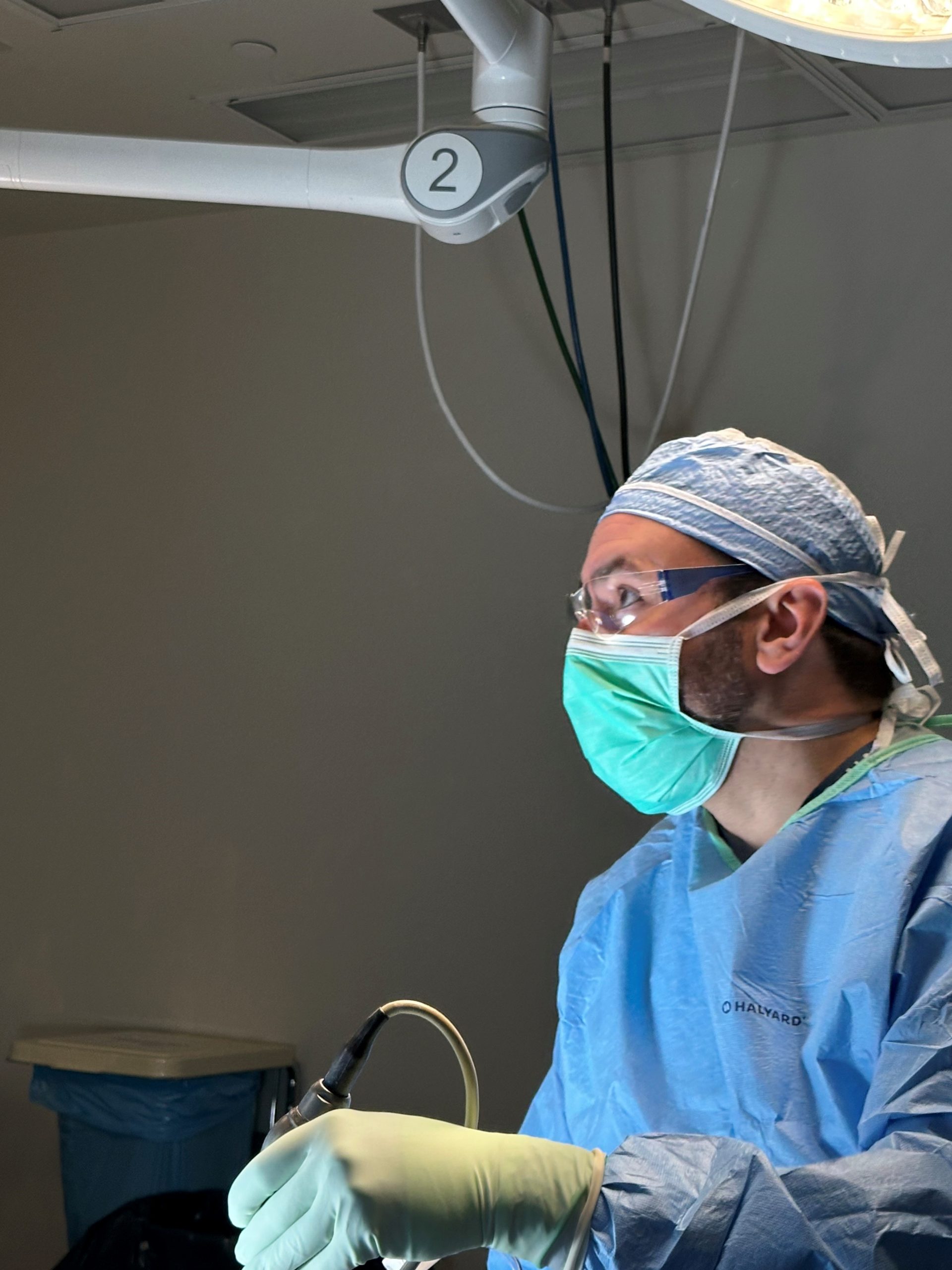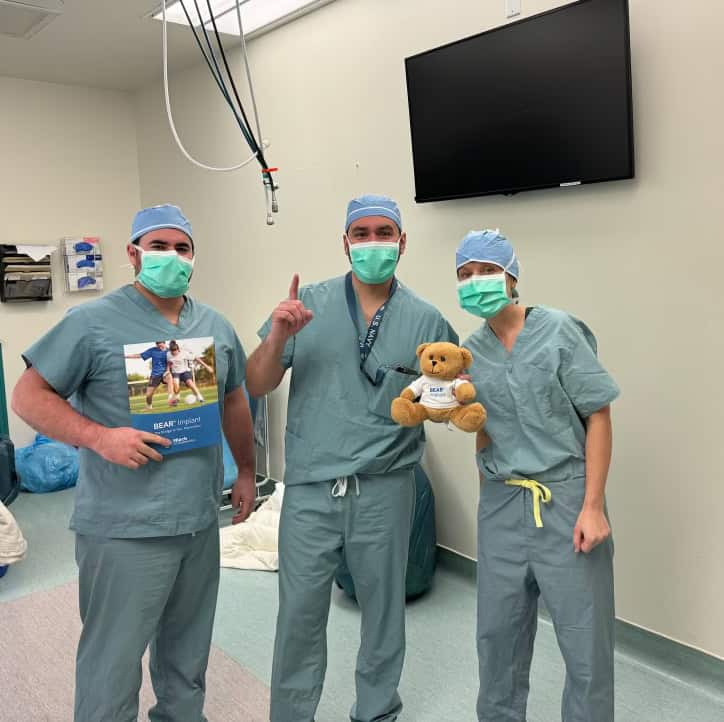Implant First Innovation in ACL Tear Treatment in 30+ years; Enables Injured ACL to Heal Itself

ERIE, Pa. (March 28, 2024) — LECOM Health Orthopedic Surgeon Joshua Tuck, D.O., is the first provider in Erie, Pa., to offer the BEAR (Bridge-Enhanced ACL Repair) Implant for treatment of anterior cruciate ligament (ACL) tears, one of the most common knee injuries in the U.S. The BEAR Implant is the first medical advancement to enable the body to heal its own torn ACL. This new approach is a paradigm shift from the traditional standard of care – reconstruction that replaces the ACL with a graft – and is the first innovation in ACL tear treatment in more than 30 years.
Every year, approximately 400,000 ACL injuries occur in the U.S. A torn ACL does not heal without treatment, resulting in ACL reconstruction being one of the most common orthopedic procedures in the U.S. Yet the treatment has drawbacks: Some procedures require additional incisions, and some people who undergo reconstruction are unable to return to the same level of daily activities or sports.

“For the first time, the BEAR procedure affords us the ability to offer a surgical repair for a torn ACL, allowing the patient to heal his or her own ligament, without taking tissue from somewhere else in his or her body or using cadaveric tissue as traditional ACL reconstruction requires,” said Dr. Tuck.
During an ACL reconstruction, the surgeon completely removes the remaining torn ACL and reconstructs it with either a tendon from the patient’s own leg (called an autograft) or a deceased donor (called an allograft). As with any surgery, ACL reconstruction has certain risks. About half of people who receive patellar tendon grafts experience pain while kneeling, and those who receive hamstring grafts have persistent weakness – as much as a 50% deficit at two years after surgery.
Unlike reconstruction, the BEAR Implant does not require a second surgical wound site to remove a healthy tendon from another part of the leg or the use of a donor tendon. The BEAR Implant acts as a bridge to help ends of the torn ACL heal together. The surgeon injects a small amount of the patient’s own blood into the implant and inserts it between the torn ends of the ACL in a minimally invasive procedure. The combination of the BEAR Implant and the patient’s blood enables the body to heal the torn ends of the ACL back together while maintaining the ACL’s original attachments to the femur and tibia. As the ACL heals, the BEAR Implant is resorbed by the body, within approximately eight weeks.
The BEAR Implant was granted De Novo Approval from the U.S. Food and Drug Administration and is indicated for skeletally mature patients at least 14 years of age with a complete rupture of the ACL, as confirmed by MRI. Patients must have an ACL stump attached to the tibia to facilitate the restoration. Patients should discuss their individual symptoms, diagnosis and treatment with their surgeon. The BEAR Implant has the same potential medical/surgical complications as other orthopedic surgical procedures, including ACL reconstruction. These include the risk of re-tear, infection, knee pain, meniscus injury and limited range of motion.
For more information, visit LECOMHealth.com or call Dr. Tuck’s office at LECOM Health Orthopedics and Pain Management, 814-868-7840.
For More Information:
Melissa J. Dixon
LECOM Health Communications and Marketing
814-462-5093, md****@***om.edu
